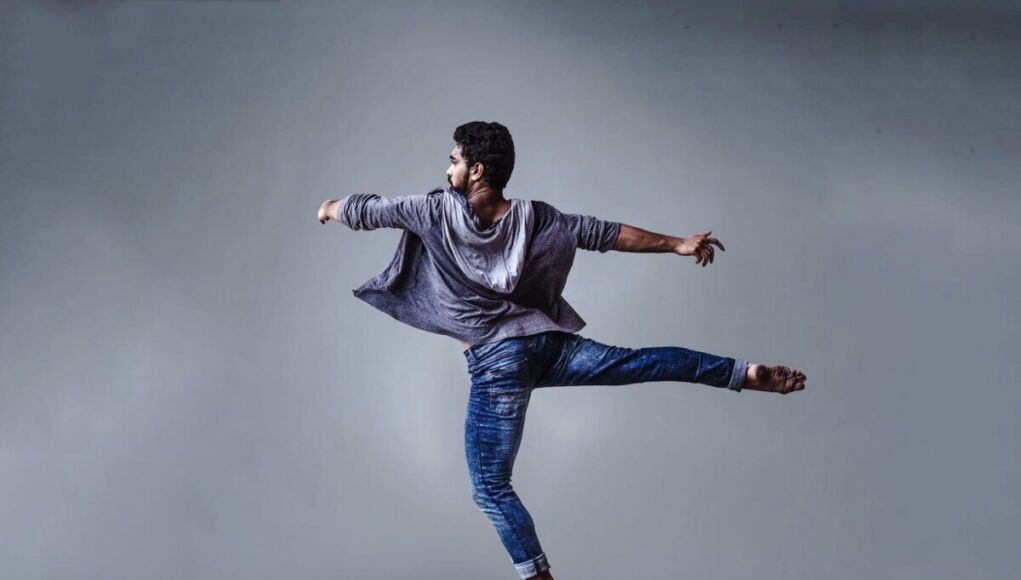Dance is a universal language that unites people across cultures. Through rhythmic movements and emotional expressions, dance transcends spoken words to foster empathy and understanding between individuals. This powerful non-verbal communication elicits emotions, conveys stories, and bridges divides. From classical ballet to street dance, the diverse dance forms demonstrate the richness of human culture and creativity.
"Dance is the hidden language of the soul." – Martha Graham
The allure of dance lies in its ability to articulate the inexpressible. Without uttering a single word, a dancer can convey a complex narrative or state of mind. A pirouette can communicate joy, a hand gesture can relay sorrow, and a rhythmic stomp can channel anger. Dance dissolves linguistic and cultural barriers. At its core, it is a profoundly human experience that resonates across civilizations.
Over centuries, myriad dance genres have evolved across the globe. Each style has its own vocabulary of movements, techniques, and costumes. Yet they all share the common thread of communicating through the body. The emotions expressed through dance are universally understood. When people see a playful, energetic dance, they feel joy and excitement. When they see fluid, lyrical movements, they perceive beauty and grace. This emotional impact underscores dance's power to transcend cultural differences.
Dance as a Universal Language
Dance is a universal language that connects people across the world. At its heart, dance expresses our shared humanity and the full spectrum of human emotions. Regardless of their language and culture, people can appreciate and connect with dance movements that convey joy, sorrow, anger, love, fear, and more. Just as music speaks to our souls, dance moves our bodies in an emotional symphony.
The desire to move rhythmically to music seems innate to human nature. Archaeological evidence shows that prehistoric peoples danced during rituals and ceremonies. Ancient civilizations, from Greece to India, used dance to tell stories, celebrate life, and express emotions. Dance continues to be an integral artform in modern societies through pop culture and the entertainment industry.
Beyond its artistic appeal, dance facilitates communication and understanding. As a non-verbal language, it allows people to interact and bond at an emotional level that transcends cultural and linguistic differences. Through dance, we can rediscover our shared humanity.
Dance as a Form of Communication
Dance employs a complex non-verbal vocabulary to communicate meaning and emotion. Dancers use their body language, facial expressions, and movement quality to convey artistic visions and messages. The varied use of space, energy, and time adds depth to the narrative.
Choreography plays a key role in translating stories into movement-based expressions. The choice of steps, formations, and dancer interactions guides the unfolding of the central theme. Choreography can bring focus to certain emotions through repeated actions or canon movements. Contrasts in tempo, levels, and direction add texture and emphasis.
Beyond set choreography, dancers use improvisation to communicate spontaneously. Drawing from their imagination and kinesthetic awareness, they craft original movements that capture a fleeting emotion or reaction. The interplay between choreography and improvisation allows dancers to develop their own voice.
As an ephemeral performing art, dance comes fully alive in front of an audience. The palpable, two-way communication between performers and viewers creates a unique experience at each show. Dance thrives in this shared energy and community.
Emotional Expression Through Dance
Dance provides a powerful medium for expressing emotions – from exuberant joy to deep grief. The dynamic, kinesthetic nature of dance makes it an effective vehicle for capturing emotional nuances and moods.
Upbeat, lively dances such as salsa and swing allow dancers to channel positive emotions like elation, excitement, and passion. Fast footwork, jumps, and spins convey the thrill and vibrancy of happiness. In contrast, slow, fluid movements in contemporary and lyrical styles beautifully demonstrate grace, tranquility, and serenity.
Dance also serves as an outlet for negative emotions. The sharp, angular motions of styles like hip-hop and street dance can represent anger, aggression, and rebellion. Other genres like tango and flamenco employ dramatic gestures, tension, and foot stomping to express intense sorrow or jealousy.
Beyond catharsis, dance enables self-discovery and emotional maturity. Exploring the full spectrum of human emotions allows dancers to deepen their self-awareness and empathy. Through dance, people can discover their emotional landscape and forge meaningful human connections.
The Power of Dance to Connect People
Dance possesses a unique power to transcend boundaries and bring people together. Throughout history, dance has facilitated human connections across ethnic, socioeconomic, and cultural divides. Creative dance initiatives continue to promote unity and togetherness in communities.
Dance is universal – most cultures around the world have developed their own dance traditions. Historical accounts show adversaries settling disputes through dance. In modern times, dance festivals like Harmony in the Park attract a diverse audience to celebrate diversity. Dance movements like La Danse Citoyenne use workshops and social gatherings to build intercultural understanding.
Dance is inclusive and can be enjoyed regardless of age, gender, or ability. Dance classes and social dances weave people together into an accepting community. Mirroring movements and dancing in unison fosters bonds and synchronicity. The shared experience and emotional resonance of dance can overcome differences.
As a collaborative artform, dance connects not just performers but entire audiences. The communal spirit of dance performances and competitions creates lasting social cohesion. Ultimately, dance links people through joyful expression and a universal language of movement.
History of Dance
Dance has been an integral part of human culture since prehistoric times. The history of dance reveals how movement and rhythms evolved over millennia to communicate meaning, express creativity, and build communities.
Some of the earliest evidence of dance comes from 9000 year old Bhimbetka cave paintings in India showing figures dancing around animals. Dance was vital in ancient Egypt where tomb paintings depict priests dancing to invoke the gods. In Ancient Greece, dance drama gained popularity and dance became central to theatre and mythology.
As civilizations interacted through trade and conquest, dance styles blended and spread. Middle Eastern and European folk dances like the Arabesque and Maypole dance emerged. By the 15th century, ballet developed in the Italian courts with structured choreography. In the 17th century, partner dances like the minuet became staples of European ballrooms.
The African diaspora spread dance forms like Lindy hop and salsa to America. Dance genres continued to intermingle and evolve through the ages, from tap and jazz to disco and hip-hop. Traditional dances remain living heritage in many countries. The history of dance reflects an enduring human passion for creative expression through movement.
Different Types of Dance
Dance is a broad realm encompassing numerous genres that have developed across the world. Each dance form has distinct movement vocabularies, techniques, and cultural roots. Some major types of dance include:
Ballet – Characterized by poised posture, graceful turns and leaps, and ethereal quality. Originated in 15th century Italian courts.
Contemporary – Free-flowing, lyrical style fusing modern dance and ballet. Emerged in the mid-1900s as a rebellion against rigid ballet.
Jazz – High-energy dance with bold, athletic movements set to pop music. Evolved from African-American vernacular styles.
Tap – Percussive dance featuring rhythmic foot tapping and improvisations. Blends African and Irish dance influences.
Hip-Hop – Urban dance with intricate footwork, gestures, and street dance moves. Originated among African-American youth in the 1970s.
Salsa – Fast, vibrant partner dance from Cuba and Puerto Rico. Features complex footwork and rapid spins.
Kathakali – Classical Indian dance-drama with elaborate costumes, face paint, and hand gestures. Depicts Hindu epics.
Flamenco – Passionate Spanish solo dance punctuated by heel-stomping and hand-clapping.
This diversity of styles celebrates the richness of human culture and creativity expressed through dance.
Benefits of Dancing
Beyond its artistic and social value, dancing offers tremendous physical, mental, and emotional benefits. As an enjoyable form of exercise, dancing can improve fitness, coordination, and overall wellbeing.
On a physical level, dancing builds strength, endurance, flexibility, balance, and motor skills. The aerobic activity provides cardiovascular conditioning. Learning choreography enhances mental acuity, focus, and memory. Mirroring a teacher's movements also develops proprioception and spatial awareness.
Dancing relieves stress and induces positive emotions through the release of endorphins. The creative self-expression enhances mood and self-confidence. Dancing with others fosters communication skills, social bonds, and a sense of belonging.
For older adults, dancing promotes mobility, reaction time, and mental sharpness. Partner dances provide touch therapy that is beneficial for emotional and cognitive health. In all ages, dancing can delay or reduce chronic health issues like heart disease, diabetes, and depression.
The therapeutic benefits of dance make it an appealing activity for people seeking an enjoyable way to exercise, express themselves, and engage with others. Dancing can dramatically enrich quality of life.
Dance and Culture
Dance and culture are deeply intertwined. As a non-verbal language, dance communicates cultural values, customs, and identities. Through generations, traditional dance forms have encapsulated histories and worldviews. Dance is also a living heritage that shapes cultural evolution.
Folk dances like Polynesian Hula and Hungarian Czardas preserve tribal or national traditions. Classical dances like India's Bharatanatyam and Indonesia's Legong draw from myths and epics. These styles maintain cultural continuity by passing down rituals and stories.
Dance constantly absorbs new influences as societies interact and change. The African-American community birthed jazz and hip-hop from ancestral roots, expressing identity and realism. Creative dance projects can catalyze intercultural learning. Dance often leads the way in cultural redefinition and progress.
As an intangible cultural heritage, dance educates people about their history while allowing them to reinterpret traditions. Dance scholarships and global exchanges deepen cross-cultural understanding. While honoring its past, dance propels culture forward.
Conclusion
Dance is humanity's universal language – a primal means of communication and expression. Through intricately controlled or improvised movements, dance conveys boundless creativity, emotions, and cultural perspectives. It resonates deeply and intuitively across humanity.
Beyond entertainment and artistry, dance fosters human connections and inclusivity. As an immersive experience, dance expands our awareness and empathy. At its heart, dance affirms our shared joys, sorrows, values, and purpose. It is a unifying force that transcends boundaries. Dance weaves us together through rhythms of life and liberation.
































